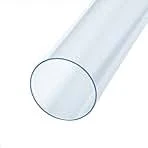Sep . 25, 2024 23:42 Back to list
ppr pipe fittings
Understanding PPR Pipe Fittings A Comprehensive Overview
PPR (Polypropylene Random Copolymer) pipes and fittings have become increasingly popular in various plumbing and construction applications due to their numerous advantages. Lightweight, durable, and resistant to corrosion, PPR pipes are an ideal choice for transporting water and other fluids. This article highlights the characteristics, benefits, and applications of PPR pipe fittings, along with installation guidelines to ensure optimal performance.
Characteristics of PPR Pipe Fittings
PPR pipe fittings are made from a type of polymer known as polypropylene random copolymer, which is recognized for its high resistance to temperature fluctuations and chemicals. Various fittings, such as elbows, tees, couplings, and reducers, are designed to connect sections of piping and facilitate bends and junctions in plumbing systems.
One of the most significant characteristics of PPR fittings is their excellent resistance to thermal expansion. This quality allows PPR pipes and fittings to withstand varying temperatures without compromising their structural integrity. They can efficiently handle hot water applications, making them a preferred choice for hot water distribution systems.
Another important aspect of PPR fittings is their low thermal conductivity. This property helps reduce energy loss in hot water systems, contributing to enhanced energy efficiency. Moreover, PPR fittings do not suffer from rust or corrosion, which often affects traditional metal fittings, significantly extending their lifespan.
Benefits of Using PPR Pipe Fittings
1. Durability PPR pipe fittings are highly durable, with a lifespan often exceeding 50 years under proper usage. Their resistance to most chemicals and failure over time makes them ideal for high-demand environments.
2. Lightweight Compared to metal fittings, PPR fittings are significantly lighter, making them easier to handle and install. This weight advantage translates into reduced transportation costs and easier manipulation during installation.
3. Smooth Internal Surface The internal surface of PPR fittings is smooth, which minimizes friction loss and allows fluids to flow more freely. This characteristic improves the overall efficiency of water transport systems.
4. Seamless Joints PPR fittings are typically joined using a fusion welding process, which creates seamless and strong connections between pipes and fittings. This method reduces the risk of leaks and ensures a secure fit.
5. Environmentally Friendly PPR materials are recyclable and environmentally friendly, making them a sustainable choice for construction projects. Their non-toxic nature eliminates concerns regarding contamination of drinking water.
ppr pipe fittings

Applications of PPR Pipe Fittings
PPR pipe fittings are versatile and can be used in various applications, including
- Residential Plumbing For both hot and cold water systems in homes, PPR fittings provide reliable and durable connections. - Central Heating Systems Due to their high-temperature tolerance, PPR fittings are widely used in heating systems that require efficient heat distribution. - Industrial Applications Industries require robust plumbing systems that can withstand harsh chemicals; PPR fittings serve this purpose well, offering protection against corrosive substances.
- Irrigation Systems Farmers have embraced PPR fittings for irrigation projects since they prevent leaks and ensure water delivery efficiency.
Installation Guidelines
Installing PPR pipe fittings requires some specific tools and techniques to ensure optimal performance
1. Tools Needed A pipe welding machine, cutting tool, measuring tape, and safety goggles are essential for a successful installation. 2. Cutting the Pipe Ensure clean cuts at a right angle to avoid any misalignment during connection.
3. Heating and Fusing Preheat both the fitting and pipe end using a welding machine until they reach the required temperature (generally around 260°C). Once heated, immediately join the two parts and hold them together until they cool.
4. Allowing Time to Set After installation, it’s crucial to allow the joints to set for the specified period before testing the system to prevent any accidental disconnections.
5. Testing for Leaks After installation, conduct a thorough inspection and pressure test to ensure there are no leaks before covering or using the new plumbing system.
Conclusion
Incorporating PPR pipe fittings into plumbing and construction offers numerous benefits, including durability, resistance to corrosion, and energy efficiency. As industries increasingly recognize the advantages of PPR fittings, it’s evident they represent the future of plumbing solutions. By following proper installation guidelines, users can ensure long-lasting, leak-proof systems that enhance the efficiency of any project.
-
High-Quality PPR Pipes and Fittings Durable ERA PPR & PVC PPR Solutions
NewsJul.08,2025
-
Black HDPE Cutting Board - Durable, Non-Porous & Food Safe HDPE Plastic Cutting Board
NewsJul.08,2025
-
High-Quality CPVC Panel Durable HDPE & PVC Panels Supplier
NewsJul.08,2025
-
Double PE Welding Rod Supplier - High Strength, Durable & Versatile Welding Solutions
NewsJul.07,2025
-
High-Quality PVC-O Pipe Supplier Durable 75mm PVC Pipe & Connections Leading PVC Pipe Company
NewsJul.07,2025
-
HDPE Drainage Pipe Supplier – Durable & Corrosion-Resistant Solutions
NewsJul.06,2025

